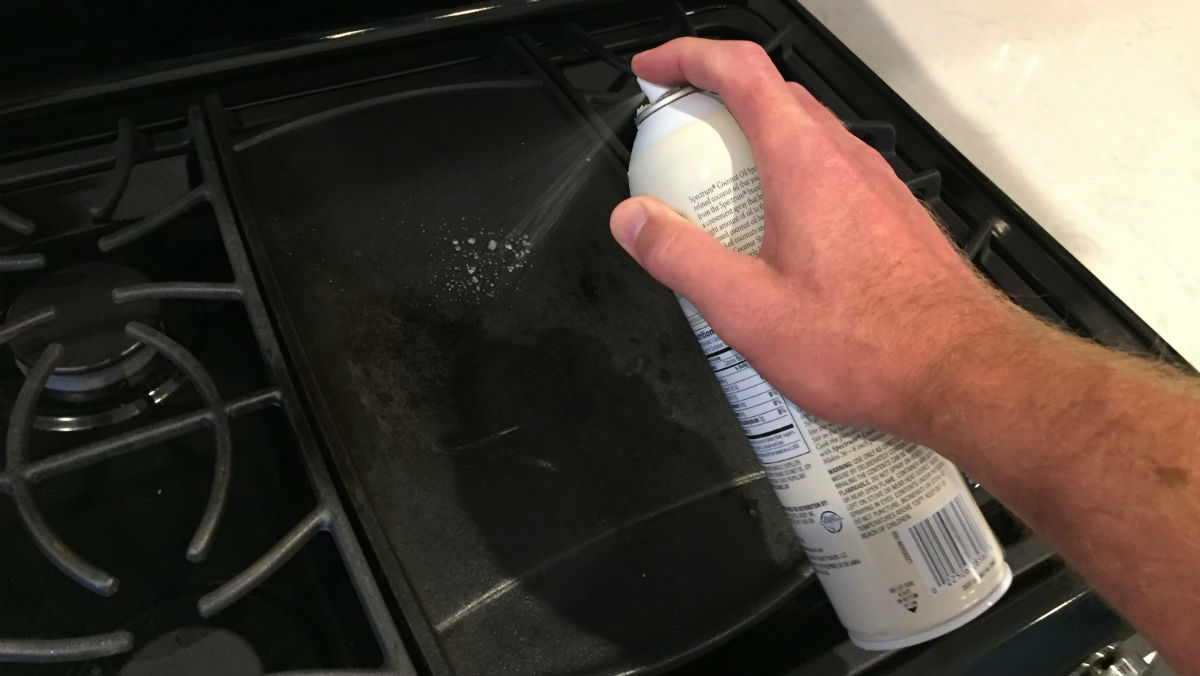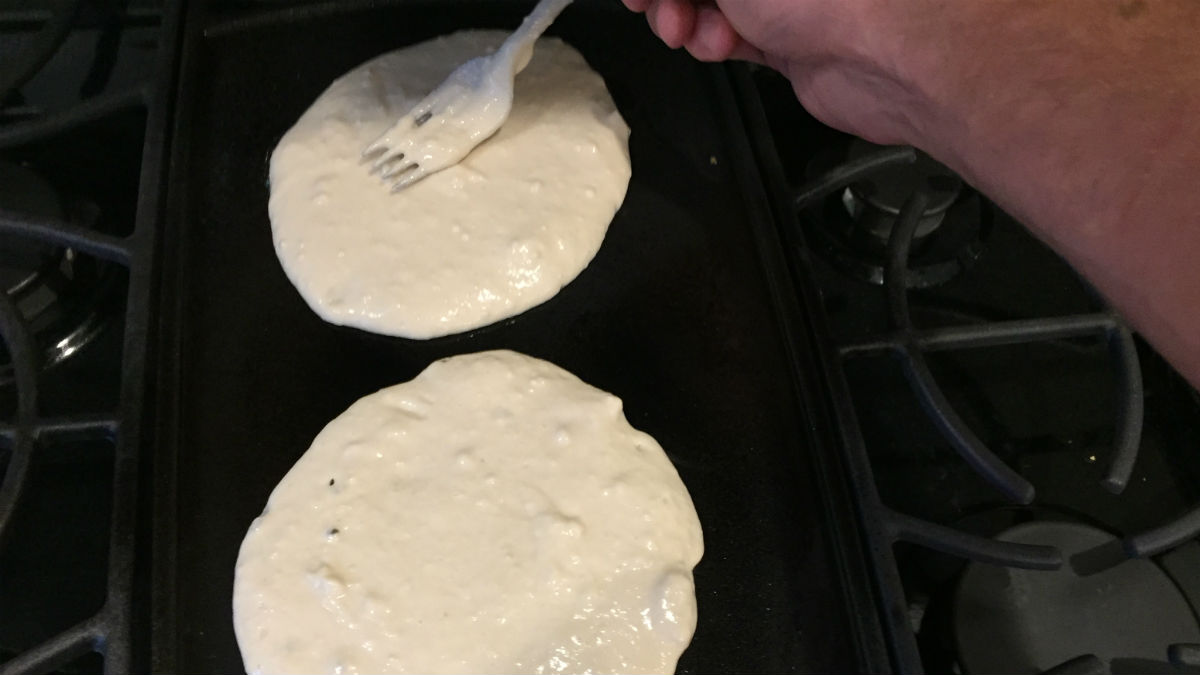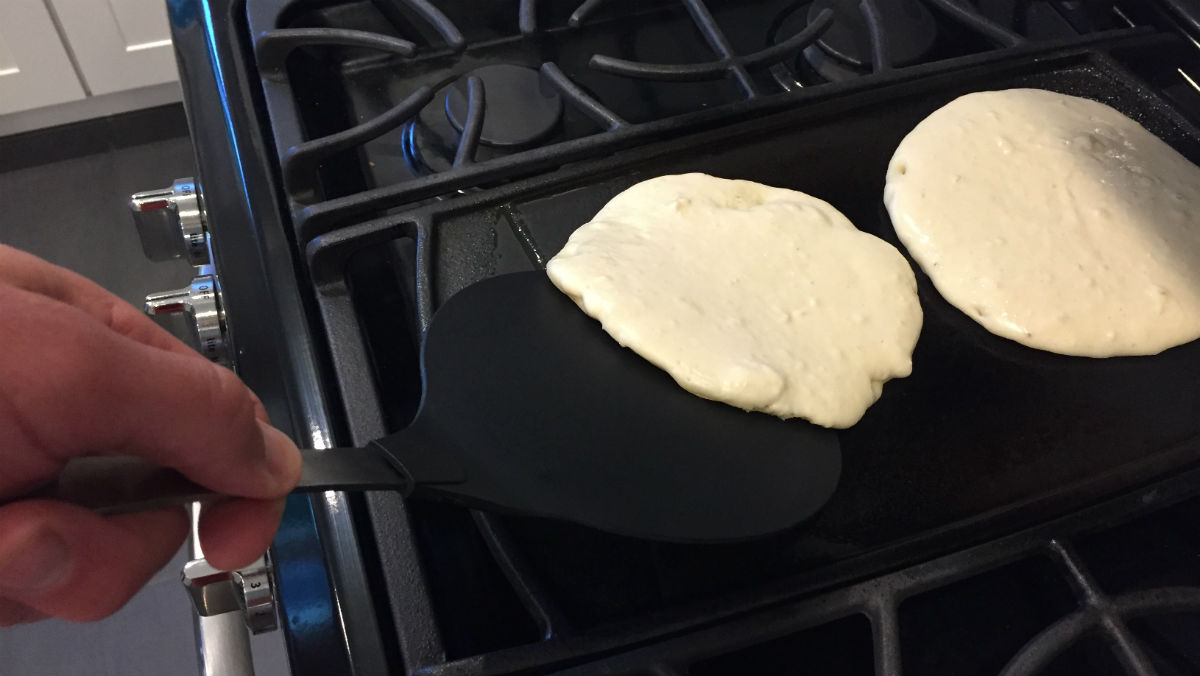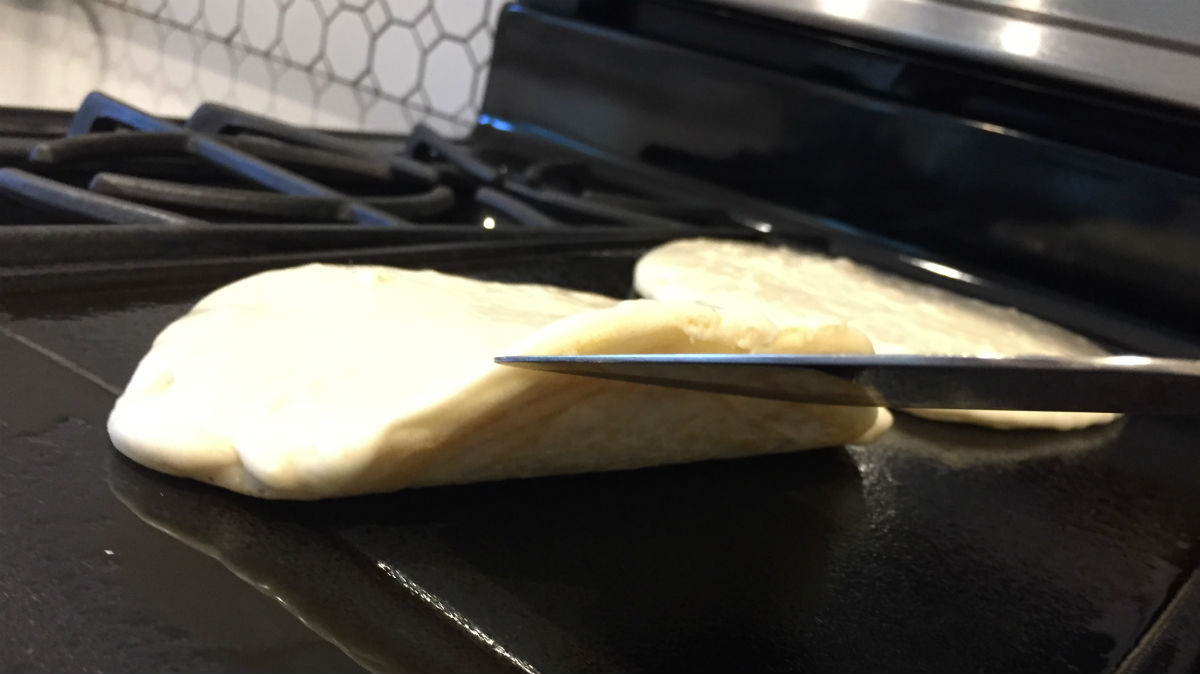What could be more satisfying than a stack of pancakes dripping with melted butter, syrup, and accompanied by perfectly cooked bacon and a hot cup of coffee? Not much, sir. Not much.
People have been enjoying the pancake for thousands of years. Various recipes can be traced to just about every ancient civilization. Today, the classic American take on the pancake is a fluffy disc of starchy goodness served with any number of toppings and typically enjoyed as a breakfast food. But you can, of course, indulge in this most comforting of foodstuffs whenever you wish.
If you thought you needed to venture out to the local diner for those fresh flapjacks, you’re not giving yourself enough credit. Why do you think people have been enjoying pancakes for so many long years? The reason is the blissful simplicity. Making pancakes is easy as long as you keep things simple and pay plenty of attention during the cooking process.
Today, I’ll be sharing with you the recipe we’ve used for years in my house.
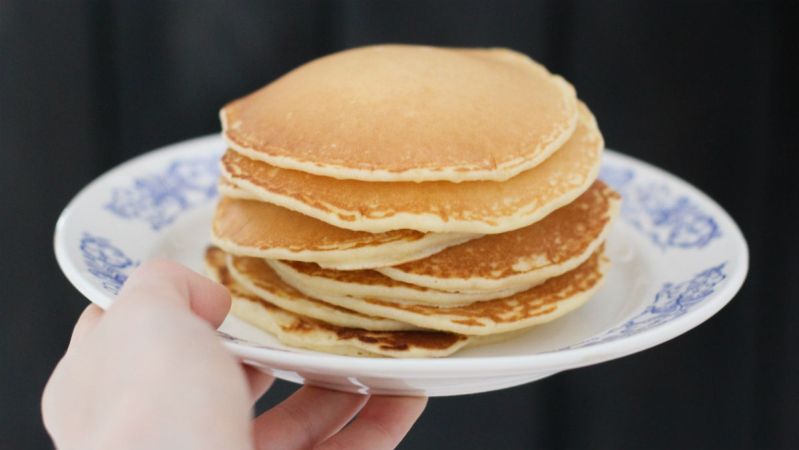
It’s about as basic as can be and for it’s wildly malleable. After taking you through the basic ingredient list and cooking process for making pancakes, I’ll suggest a number of substitutions you can make, ingredients you can add, and serving suggestions that will make these — my wife’s Super Fluff Pancake — into delectable customized creations.
But before we get down to the mixing and flipping and syrup and such, a quick note that will save you from ruined pancakes time and time again: Always be ready to make changes on the fly!
I can’t tell you how many times I’ve accidentally added too much flour or too little milk, burned one side of a pancake or undercooked another. You can always toss in a spoonful of flour or a splash of milk, peel away the burn or toss the raw cake right back onto the griddle. The process of making pancakes is often a messy affair, and your kitchen may well need quite a cleanup. But with the littlest bit of practice and the right ingredients, you’ll make great cakes every time. Even if one of them ends up burned to a crisp and tossed in the trash before anyone notices.
Easy Pancake Recipe
AKA The John Family OG Super Fluff Pancake
Five ingredients. Super simple, right? Remember, we’ll talk substitutions and additions later, but with just these five ingredients, as well as some cooking spray, you’re good to go. The following quantity of ingredients will make four medium-sized pancakes, a perfect volume for two adults who are not hungover.
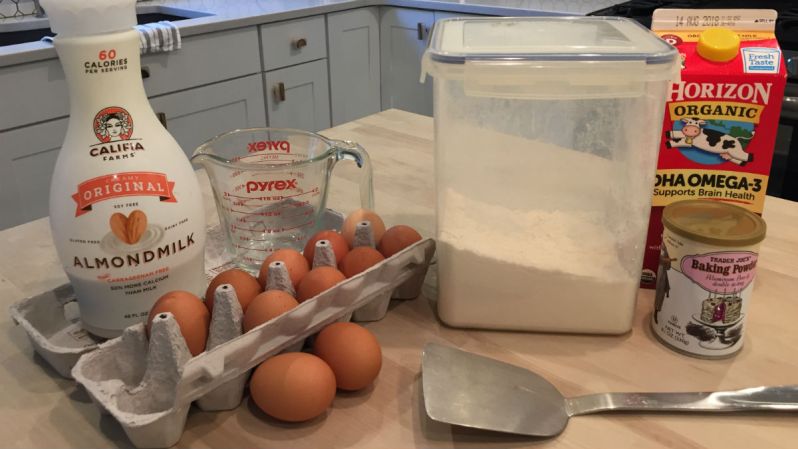
Ingredients:
- 1.5 cups flour
- 1.25 cups milk
- 3 tbsp melted butter
- 3.5 tsp baking powder
- 1 large egg
Method:
- Get that griddle or large skillet preheated to medium-heat and coated with nonstick spray.
- Mix flour and baking powder in a bowl or big pitcher.
- Add milk, then egg, then melted butter.
- Whisk with a fork (or a whisk) until the batter is smooth and (relatively) lump-free. Add more milk if the mix is dry and chunky; add more flour if it’s too liquidy.
- Pour as many medium-sized pancakes (about 7 inches in diameter) as space permits, or make silver-dollar cakes if you prefer.
- Normal pancakes will require flipping in about a minute, silver-dollar cakes within 30 seconds. Flip when bubbles rise through the batter or when you lift up the pancake and see a golden brown color on the bottom.
- Flip again before removing the cakes and probe the center of at least one to make sure there is no goo. If they’re cooking to a deep brown or black on the exterior, lower or even cut the heat ASAP. And that’s it.
Homemade Pancakes Pro Tips
Ingredients
So those are super simple pancakes, right? The secret here is that even super fancy cakes can be made using that exact recipe.
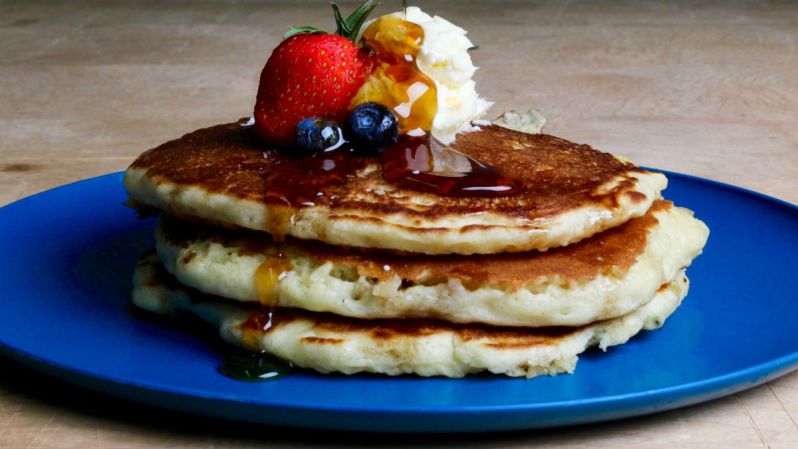
Just add any or all (but probably not all at once, for goodness sake man) of these ingredients once the batter is prepared:
- Blueberries
- Raspberries
- Chocolate bits
- Teaspoon of cinnamon
- Macadamia nut chunks
- Teaspoon of vanilla extract
- Dash of salt
The pancakes will cook without a noticeable difference but will make your guests “ooh” and “aah” and cluck their tongues with joy. If they’re kind of odd people, that is.
Substitutions
As for substitutions, you can use a butter substitute or swap out the butter for a variety of oils except for olive oil (melted coconut oil brings awesome flavor). Using almond milk or soy milk instead of dairy milk will also work just fine.

If you want to use whole wheat flour, just add a bit more milk. If you’re going with something crazy like almond flour, lower the heat a bit and cook the cakes more slowly, paying close attention to them so they don’t scorch on the outside and not cook enough within.
There are also many ways to remove the egg to go vegan, banana being the most popular substitute, but you can learn more about your options here.
Technique

When it comes to actual pancake-making, my single best piece of advice is to make the flip as easy for yourself as possible. Until your skills are complete, don’t try to flip a pancake over onto the exact spot from whence it came.
Instead, give yourself plenty of room on the griddle or even prepare a second pan to receive your flipped flappers. The best way to ruin your breakfast and your mood is to send errant pancake batter all over the stove, floor, and yourself.
Another piece of advice is to give your four-year-old (if you’ve got one) the easy jobs like pouring pre-measured milk into a large container and to tell him how much of a help he is, but to do most of the work when he’s at least five feet away from the huge container of flour, not to mention the hot stove.
